 A well-preserved tomb from the Ming Dynasty (1368-1644) has been unearthed in Xinzhou city, Shanxi province, North China. The tomb is more than 430 years old, but its contents are intact and in excellent condition, including the wooden coffin and elaborate funerary furniture. It is rare for a tomb in such good condition with well-preserved wooden furnishings to survive in Shanxi.
A well-preserved tomb from the Ming Dynasty (1368-1644) has been unearthed in Xinzhou city, Shanxi province, North China. The tomb is more than 430 years old, but its contents are intact and in excellent condition, including the wooden coffin and elaborate funerary furniture. It is rare for a tomb in such good condition with well-preserved wooden furnishings to survive in Shanxi.
 The Shanxi Institute of Cultural Relics and Archaeology discovered the tomb when excavating sites in coordination with a highway construction project. The excavations have uncovered the remains of structures from the Longshan Period (2900-2100 B.C.) and the Warring States Period (475-221 BC), and 66 tombs from the Han, Tang, Jin, Yuan and Ming and Qing dynasties.
The Shanxi Institute of Cultural Relics and Archaeology discovered the tomb when excavating sites in coordination with a highway construction project. The excavations have uncovered the remains of structures from the Longshan Period (2900-2100 B.C.) and the Warring States Period (475-221 BC), and 66 tombs from the Han, Tang, Jin, Yuan and Ming and Qing dynasties.
Among them was an intact Ming Dynasty tomb discovered on the west terrace of Hexitou village in Xinzhou’s Xinfu district. It is a brick chamber tomb 83 feet long from east to west and 21 feet wide from north to south, with a sloping entry passageway 66 feet long ending in a gatehouse with a pair of heavy doors. The gate is stone carved to imitate a wood structure. Two dragon heads look outwards on each end of the roof. The stone slabs above and on each side of the doors are carved with florals.
 Inside, the tomb consists of a main chamber, a smaller back chamber and two niches, one on the north side, one of the south, of the main chamber. The niches contain porcelain vessels. There are four jars and five bowls. The vessels are filled with grains, liquid or a lipid. The main chamber is paved with bricks. Grains are piled at the four corners of the room and in seven other spots.
Inside, the tomb consists of a main chamber, a smaller back chamber and two niches, one on the north side, one of the south, of the main chamber. The niches contain porcelain vessels. There are four jars and five bowls. The vessels are filled with grains, liquid or a lipid. The main chamber is paved with bricks. Grains are piled at the four corners of the room and in seven other spots.
 In the middle of the main room are two wood coffins. The smaller one has collapsed outer panels and inscriptions on the lid. A porcelain vessel, an amulet and a porcelain bowl were placed on the cover. The inner coffin is in good condition and painted with flowers, grasses and birds in brilliant colors. The larger of the two has a well-preserved outer coffin painted with diamond-shaped patterns in gold against a tan background.
In the middle of the main room are two wood coffins. The smaller one has collapsed outer panels and inscriptions on the lid. A porcelain vessel, an amulet and a porcelain bowl were placed on the cover. The inner coffin is in good condition and painted with flowers, grasses and birds in brilliant colors. The larger of the two has a well-preserved outer coffin painted with diamond-shaped patterns in gold against a tan background.
 The smaller chamber is furnished with wooden altars, tables, chairs, candlesticks, lampstands, incense burners, tin pots, tin cups, tin plates, painted wooden figurines, inkstones, brushes, pen holders and other writing utensils.
The smaller chamber is furnished with wooden altars, tables, chairs, candlesticks, lampstands, incense burners, tin pots, tin cups, tin plates, painted wooden figurines, inkstones, brushes, pen holders and other writing utensils.
On the north wall of the entry passage near the doors is an epitaph which reads: “The epitaph of the prince of Ming Confucian Hou’an… Gongbaluo, whose courtesy name is Benyi, is also the nickname of Hou’an… Hou Xingong Rongxian, the clansman  Those who have borrowed money to become prosperous should not be arrogant, and they should change their appearance and courtesy when meeting people of all ages.” Another inscription on the wall is a land purchase certificate. From the epitaph and certificate, archaeologists have identified the occupant of the tomb as Wang Luo, a famous eunuch king of Xinzhou in the Ming Dynasty. He was born in 1533 and died in 1588.
Those who have borrowed money to become prosperous should not be arrogant, and they should change their appearance and courtesy when meeting people of all ages.” Another inscription on the wall is a land purchase certificate. From the epitaph and certificate, archaeologists have identified the occupant of the tomb as Wang Luo, a famous eunuch king of Xinzhou in the Ming Dynasty. He was born in 1533 and died in 1588.
* This article was originally published here
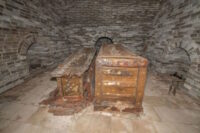
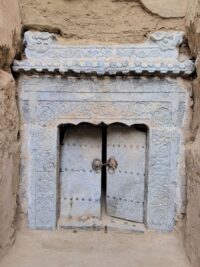
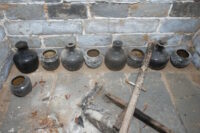

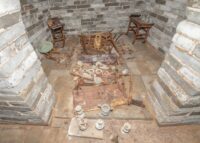
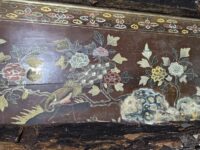








No comments:
Post a Comment